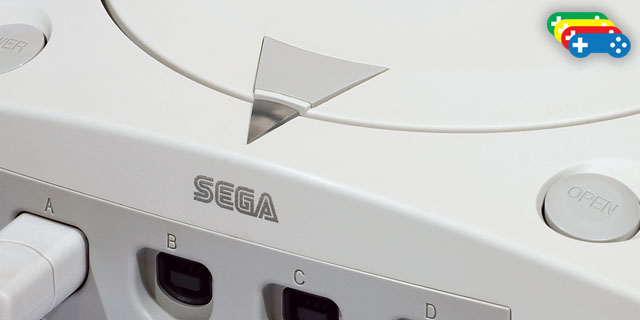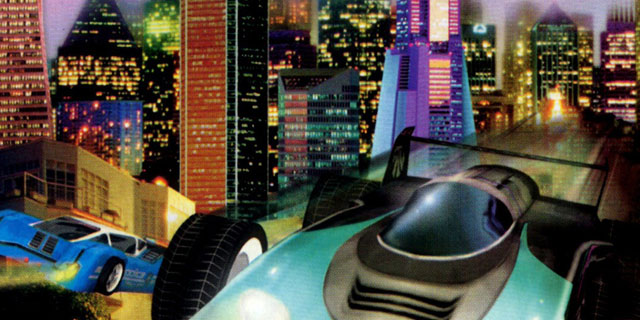
The Dreamcast is a system with a sizeable fan base, even to this day. There’s a reason for that, beyond it containing Sega’s last system-scale software push and being the first polygonal system to care about long-term visual fidelity. Why? It’s because it was, for all intents and purposes, an arcade system, and like the Neo Geo before it, it enjoyed the pick-up-and-play, attention-grabbing fare that framework brings. Unlike the Neo Geo, though, the Dreamcast had a four-player party play focus.
Since this is my first one of these, I’d like to explain my badge system. A good multiplayer game has to have at least one of these four aspects, and the more it has, the better:
 Party-friendly: This one’s easy to pick up for newcomers and enjoy the first time even against stiff competition. It’s also good for spectators.
Party-friendly: This one’s easy to pick up for newcomers and enjoy the first time even against stiff competition. It’s also good for spectators.
 Deep: Multiplayer games tend to be rather evanescent. These games have more meat on their bones, and stand up to multiple sessions or lots of consecutive hours of play on content variety alone.
Deep: Multiplayer games tend to be rather evanescent. These games have more meat on their bones, and stand up to multiple sessions or lots of consecutive hours of play on content variety alone.
 Competitive: These are the games you play against your friends, build up skills and keep on challenging each other as you go. They’re addictive because of the rivalries they create.
Competitive: These are the games you play against your friends, build up skills and keep on challenging each other as you go. They’re addictive because of the rivalries they create.
 Cooperative: There’s something about working together with friends that can really make an experience special. These do it, and they do it well.
Cooperative: There’s something about working together with friends that can really make an experience special. These do it, and they do it well.



 Games can have smaller bits of these elements, and for those, I’m giving them these minibadges. I didn’t forget about these parts of these games, but they may not define the core experience.
Games can have smaller bits of these elements, and for those, I’m giving them these minibadges. I didn’t forget about these parts of these games, but they may not define the core experience.

ChuChu Rocket!

 This Sonic Team puzzler is one of the most frantic experiences in games. It’s absolutely crazy to take on the huge wave of mice (ChuChus) and try to siphon just enough of them into your rocket and away from others. Anyone familiar with only the single-player mode would be astounded that the party play is the same game at all, as the thinking is rapid-fire and the luck factor is huge. Still, if your friends are okay with a little chaos, this one can be a riot.
This Sonic Team puzzler is one of the most frantic experiences in games. It’s absolutely crazy to take on the huge wave of mice (ChuChus) and try to siphon just enough of them into your rocket and away from others. Anyone familiar with only the single-player mode would be astounded that the party play is the same game at all, as the thinking is rapid-fire and the luck factor is huge. Still, if your friends are okay with a little chaos, this one can be a riot.
Armada

 It’s been described as Gauntlet in space, and that’s because that’s exactly what it is. You control ships, flying around the galaxy and completing quests through Asteroids-style shooting. It’s a bit rough around the edges, and it doesn’t do the best job of explaining to you exactly what you need to be doing, but a little trial and error will get you a game you can sit and play for hours.
It’s been described as Gauntlet in space, and that’s because that’s exactly what it is. You control ships, flying around the galaxy and completing quests through Asteroids-style shooting. It’s a bit rough around the edges, and it doesn’t do the best job of explaining to you exactly what you need to be doing, but a little trial and error will get you a game you can sit and play for hours.
Dead or Alive 2
 While Soul Calibur is probably the system’s defining fighting game, Dead or Alive 2 takes a close second, and more importantly for us, it has a tag-team mode. The mechanics haven’t changed much since those days even if the graphics have, so it’s still a lot of fun to throw in that disc and stare menacingly at the other two people in the room that just so happen to be against you at that given moment.
While Soul Calibur is probably the system’s defining fighting game, Dead or Alive 2 takes a close second, and more importantly for us, it has a tag-team mode. The mechanics haven’t changed much since those days even if the graphics have, so it’s still a lot of fun to throw in that disc and stare menacingly at the other two people in the room that just so happen to be against you at that given moment.

Power Stone 2

 If there’s ever been a proper rival to Super Smash Bros., it was Capcom’s gem-fighting sequel. The original is held in high regard, but it was 2 that added the four-player craziness we remember. It’s bizarre that there hasn’t been a follow-up yet. Really.
If there’s ever been a proper rival to Super Smash Bros., it was Capcom’s gem-fighting sequel. The original is held in high regard, but it was 2 that added the four-player craziness we remember. It’s bizarre that there hasn’t been a follow-up yet. Really.
Tennis 2K2

 The sequel to Virtua Tennis did what sequels do: tweak the things that need tweaking, flesh out options and modes and update what it can. That’s all it really needed, though, because the core tennis gameplay was just so fun. It’s not quite Mario Tennis or Hot Shots Tennis-level easy to play, but the nuances in the game are worth investing some time in, and the doubles dynamics are gracefully subtle.
The sequel to Virtua Tennis did what sequels do: tweak the things that need tweaking, flesh out options and modes and update what it can. That’s all it really needed, though, because the core tennis gameplay was just so fun. It’s not quite Mario Tennis or Hot Shots Tennis-level easy to play, but the nuances in the game are worth investing some time in, and the doubles dynamics are gracefully subtle.
Toy Commander
 There’s certainly been nothing like it since. Toy Commander was a military action game set in a house, with toys. Yep! There’s a lot of dogfighting, but then you could also run around the ground in a tank. (A toy tank, of course. Obviously.) It’s not the most refined game, but it’s a lot of crazy stupid fun to get in there and duke it out with buddies.
There’s certainly been nothing like it since. Toy Commander was a military action game set in a house, with toys. Yep! There’s a lot of dogfighting, but then you could also run around the ground in a tank. (A toy tank, of course. Obviously.) It’s not the most refined game, but it’s a lot of crazy stupid fun to get in there and duke it out with buddies.

San Francisco Rush 2049

 It may have been the last real game in the classic Rush series, but it’s not because it killed the series. Rush 2049 controlled smoothly, had devious, tough-to-execute shortcuts to learn and let you ride around in some cool-looking future vehicles while it did. The Dreamcast edition was the best of the home versions, though we’d recommend giving the arcade version a spin if you can find a four-player (or more) setup somewhere.
It may have been the last real game in the classic Rush series, but it’s not because it killed the series. Rush 2049 controlled smoothly, had devious, tough-to-execute shortcuts to learn and let you ride around in some cool-looking future vehicles while it did. The Dreamcast edition was the best of the home versions, though we’d recommend giving the arcade version a spin if you can find a four-player (or more) setup somewhere.
Worms World Party
 Worms is at its best on PC, but if you prefer a console version, the Dreamcast version of World Party is where it’s at. Modern downloadable versions tended to scale back arsenals and squad sizes, and much of the focus there is online play and making sure things work in that context. The Dreamcast version is basically a pure port of the PC original, and with all the convenience of passing around a controller to play it.
Worms is at its best on PC, but if you prefer a console version, the Dreamcast version of World Party is where it’s at. Modern downloadable versions tended to scale back arsenals and squad sizes, and much of the focus there is online play and making sure things work in that context. The Dreamcast version is basically a pure port of the PC original, and with all the convenience of passing around a controller to play it.



















